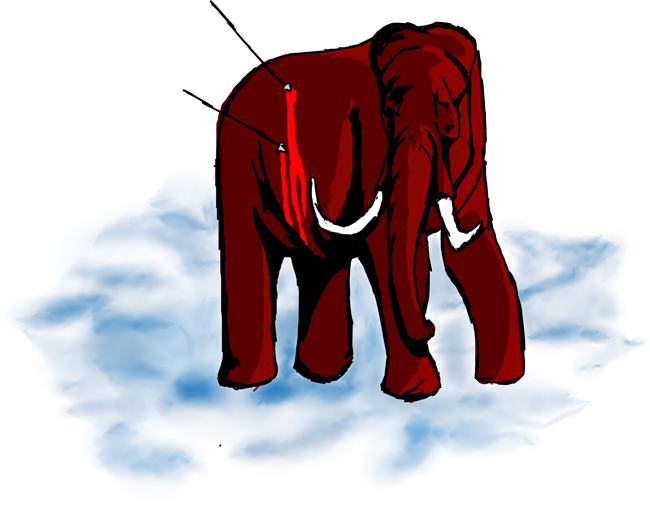
After the worst year-long drought on record, along with the hottest month recorded in the state’s history (July 2011), Texas has still not taken the hint and appropriately prepared itself for climate change, according to a new report from the Natural Resources Defense Council. The report notes that, although Texas is at particular risk for the effects of climate change, it doesn’t currently have any state adaptation plan and all attempts to develop one have failed. The report also notes that, though this recent drought has been bad, we shouldn’t think of it as a worst-case scenario. Tree ring records suggest that the state has experienced worse in the past. If climate change continues on its current path and we don’t prepare, we’re likely to experience even worse droughts in the future.
Terrifying dinosaur both soft and feathery
As paleontologists uncover more and more fossils, it’s becoming more apparent that many dinosaurs wore feathers. The latest find, Yutyrannus huali, a distant relative of the scaly Tyrannosaurs rex, is the largest known dinosaur to feature plumage at more than 40 times the size of the previous record holder. Xing Xu, the lead author of the paper announcing the discovery, described the giant and ferocious beast as covered in feathers that resembled those of a baby chick rather than of an adult bird.
Diamonds are a quantum computer’s best friend
One of those most exciting fields in physics is that of quantum computing, where scientists are working to build a computer for the future, which can quickly solve problems that current computers would spend longer than the age of the universe working on. This week, scientists announced that they built a small quantum computer inside a diamond. While most computers speak using the language of bits — a series of 1s and 0s — quantum computers use qubits, which exist in a state of both 1 and 0 and, as a result, can do several calculations simultaneously. The diamond quantum computer only had 2 qubits (as opposed to your hard drive, which has roughly 8 trillion bits), but demonstrated characteristics of being a
quantum computer.
Smart sand needs to get smaller
The dream of MIT researchers in the Distributed Robotics Laboratory is to give you a bag of sand, have you put an object in there, give the bag a shake and have the sand recreate the object. We’re not there yet, but they have created “large sand” — cubes about a centimeter to a side — that can effectively do the same thing. These tiny boxes have tiny computer parts inside that communicate with the other boxes to recreate 2D structures and computer models suggest that they should be able to do 3D as well. However, the sand needs to get much smaller before that can be tested.
Old humans slaughtered mammoths
Scientists have uncovered the remains of a woolly mammoth, nicknamed Yuka, who appears to have been cut up and buried by humans. Though Yuka has bite marks, caused by animals, there are other slices that could only have been made by humans and, additionally, several organs had been removed. The researchers suspect that the animal was killed for food, but, since it was a large animal, not all of it could be taken at once and the leftovers were buried for a later date.





















